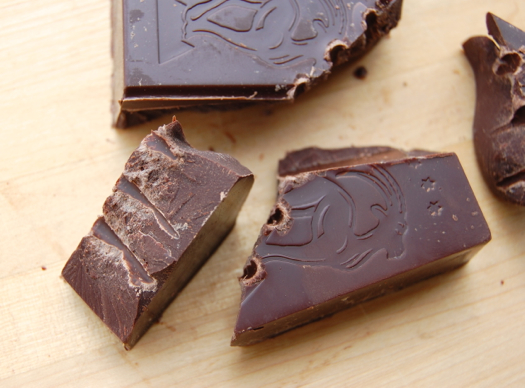Bittersweet Chocolate

Bittersweet (often simply called “dark”) chocolate is probably the most useful type of chocolate in the pastry kitchen, which is why I always have a little on-hand in one form or another. It’s also the most variable in its composition. Chocolates in the bittersweet family can contain as little as 35% cocoa solids or as much as 70%. Similarly, cocoa butter content can be anywhere from 25-38%, sugar content 30-50%. Bittersweet chocolates contain a small amount of lecithin and no milk solids.
I should insert that the definitions of bittersweet and semisweet tend to blur together in the US where, unlike Europe, there are no formal guidelines as to what constitutes either, and every chocolatier has its own set of standards. Your best bet for determining the relative darkness of a chocolate is to check the percentages on the packages which have become a de-facto standard in the industry the last twenty years or so.
An FYI to your readers in the UK or using British recipes: Bittersweet chocolate in North America is your “plain chocolate.” (Although sometimes plain chocolate is sweet enough to be North American “semi-sweet.”)
As an aside, I found it utterly amusing while living in the UK that bars of “plain chocolate with fruit and nuts” would not be considered a contradiction in terms (it seems like saying “plain toast with peanut butter and jelly”), but I eventually stopped being so literal-minded 🙂
Nice! Very helpful, Jen!
– Joe